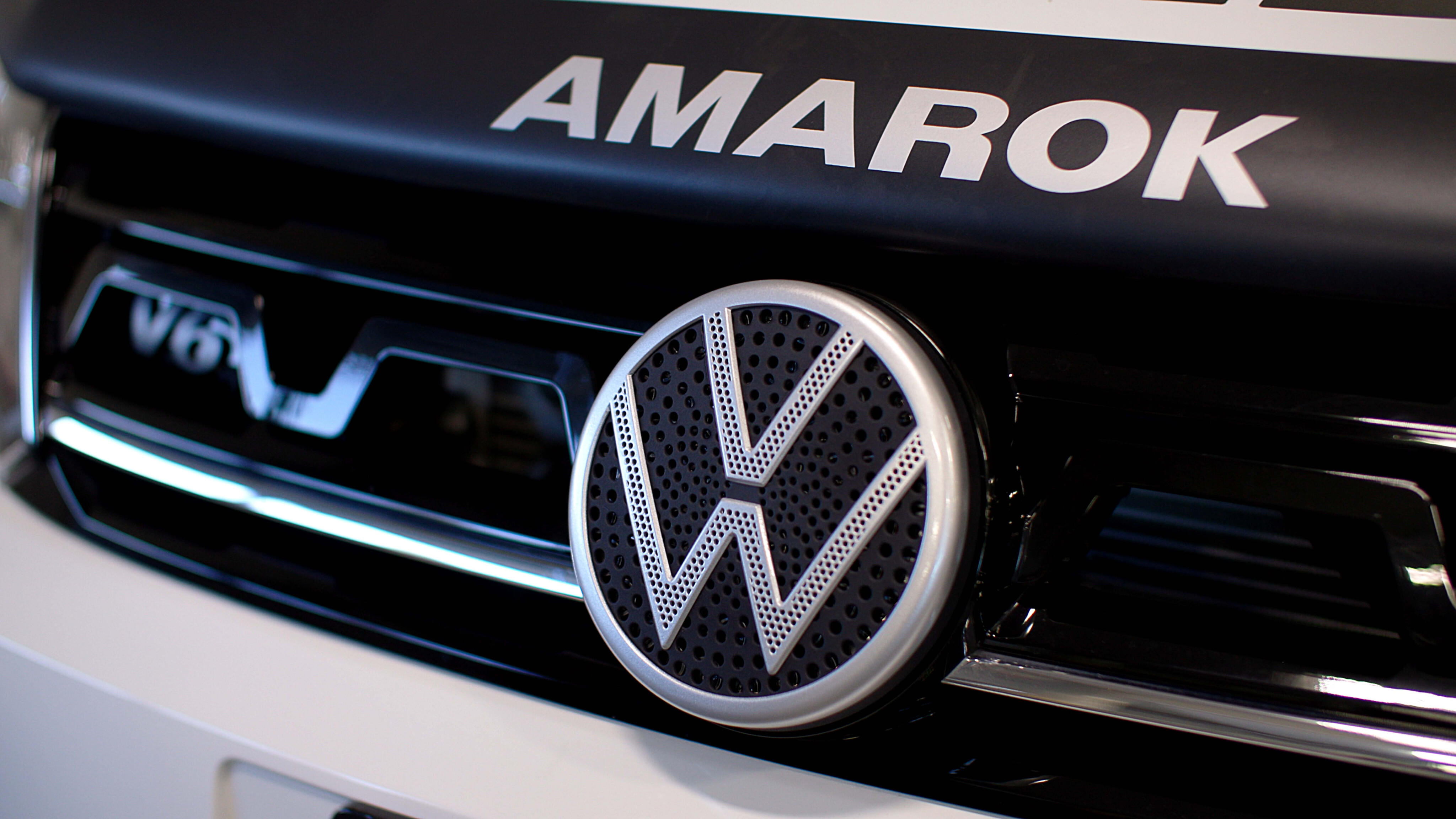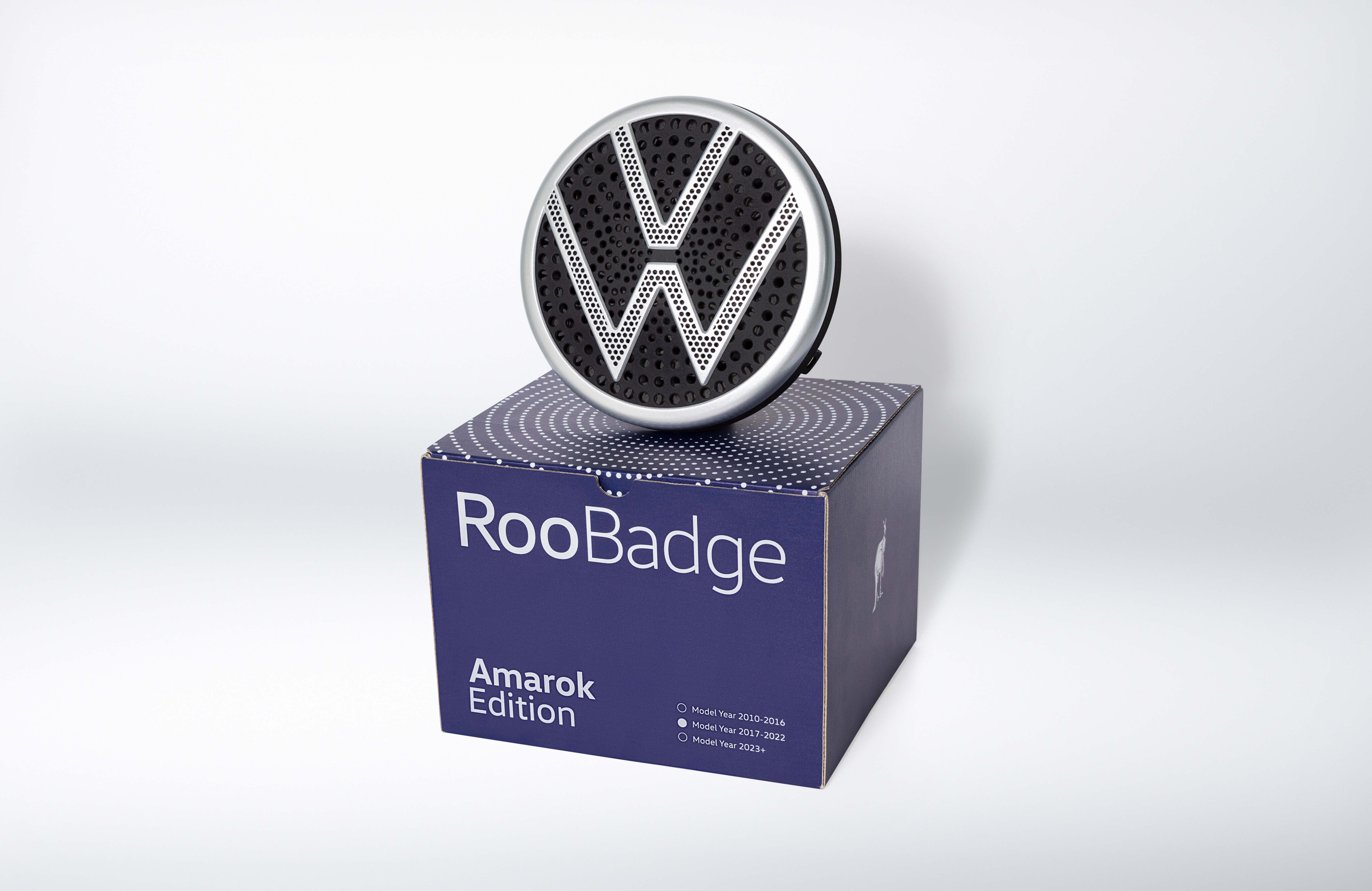
Volkswagen has announced it is about to begin real-world testing of an ‘accessories concept’ called the ‘RooBadge’ designed to reduced road collisions with Australia’s national emblem.
Apparently not an April Fool’s Day joke, RooBadge is an integrated speaker built into the Volkswagen badge in what the car maker says is “the world’s first scientifically proven kangaroo deterrent”.
Volkswagen says it has worked with the University of Melbourne as well as the WIRES animal rescue organisation over the past three years in the development the RooBadge.

Kangaroos, according to WIRES, are involved in 90 per cent of vehicle road collisions involving wildlife at a significant human and financial cost.
The RooBadge – integrated into a unique Volkswagen roundel on the front of an Amarok dual-cab ute in the press material – provides “a protective audio shield” to signify danger to nearby kangaroos.
It connects to an in-car app to combine GPS (Global Positioning System) and kangaroo distribution data to emit a ‘focussed beam’ from the 17cm diameter RooBadge unit as a ‘unique audio deterrent’ localised for the species of kangaroo in the area.
“We’re working on sounds that will be meaningful to Eastern Grey Kangaroos – things like dingo calls, alarm calls made by birds, and the alarm thumps that kangaroos make to warn each other,” said Associate Professor Graeme Colson from the University of Melbourne.

“We need sufficient data to show that we’ve got an effect. We want a stimulus that is meaningful to the kangaroos, that will stay with them, that will respond [to] time and time again in a particular way.”
While there’s no indication of what the RooBadge may cost customers, or timing of when it may be introduced, the green light has been given by the University of Melbourne’s ethics committee for Stage Four of the program – real-world testing involving control vehicles and wild kangaroos – to commence.
“[RooBadge does] something no kangaroo deterrent has been able to do before,” said Associate Professor Graeme Coulson.

The Volkswagen RooBadge is not the first system to use such an audio beam to deter kangaroos, with aftermarket products such as the ShuRoo – introduced in 1986 – already on sale.
A 2022 University of Melbourne report published by Coulson and Dr Helena Bender concluded: “Rather than retro-fitting an ill-conceived device like the ShuRoo, an integrated, inter-disciplinary approach is needed to resolve the pervasive problem of macropod-vehicle collisions.”
The RooBadge technology may have applications overseas as well, according to Bender.

“What’s interesting about deer relative to kangaroos is they’re very similar in body size, head size and ear size. What we find with kangaroos has application for deer as well.”
Kangaroos have posed significant problems on Australian roads, with remedies including the popular ‘Roo Bar’ bull-bar designs from major car makers – as well as the world’s first kangaroo crash-test dummy introduced by Holden in 1994, dubbed ‘Robo Roo’.
WIRES spokesperson John Grant said: “Kangaroo collisions are increasing every year and with more motorists on the roads over the Easter holiday period we are expecting a spike in rescue calls for injured adults and displaced joeys.”

COMMENTS